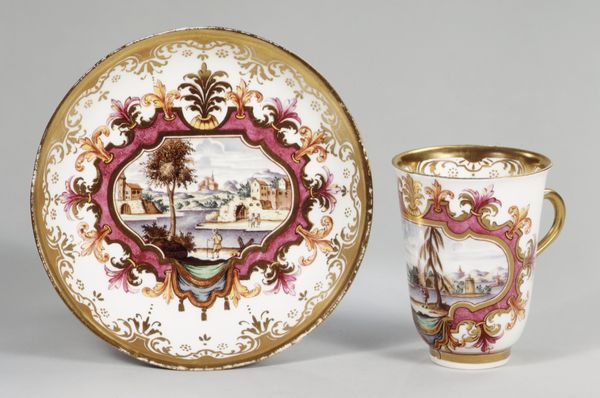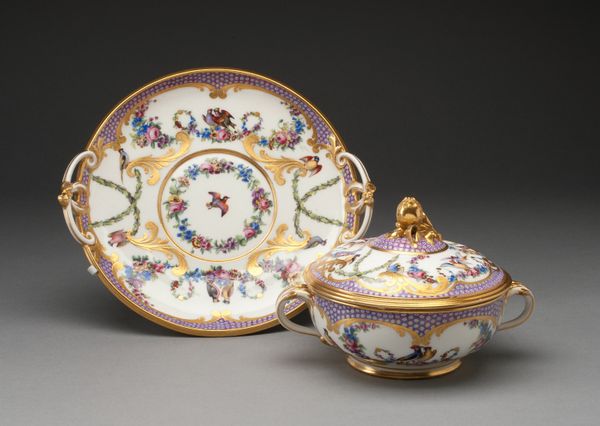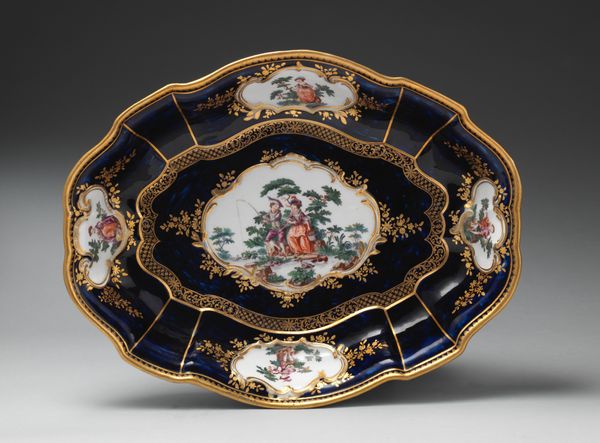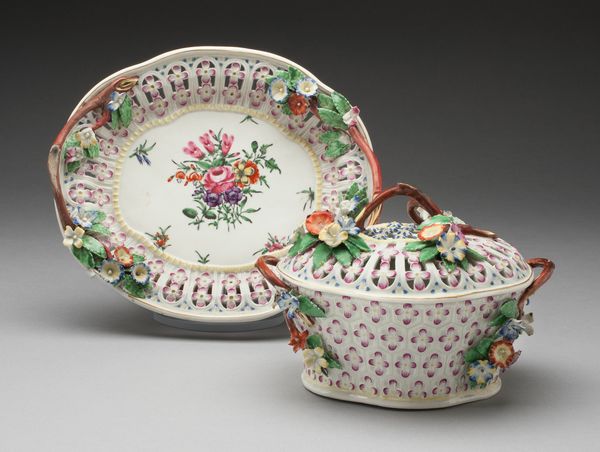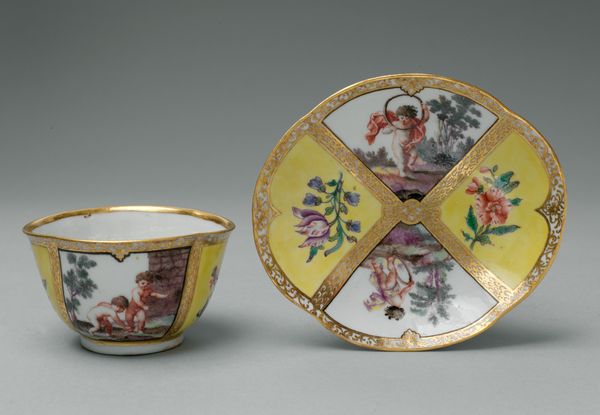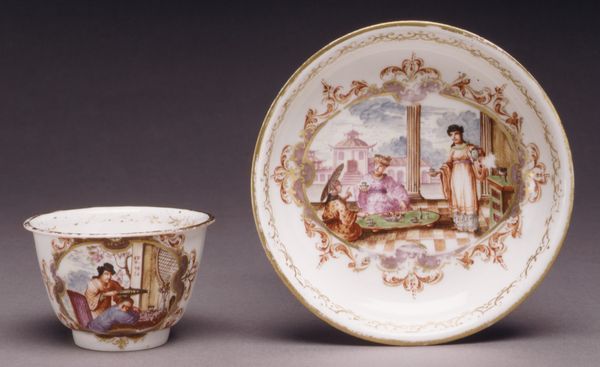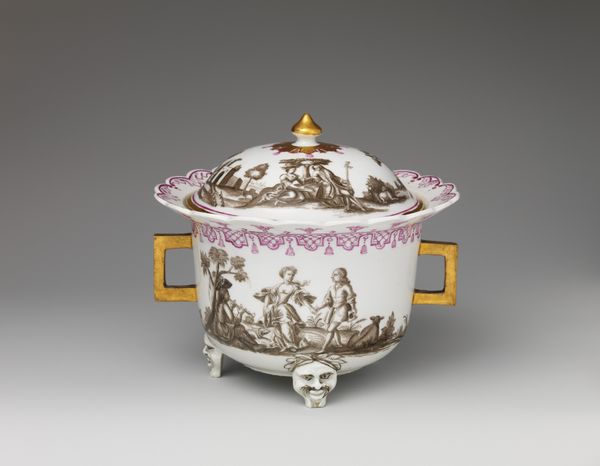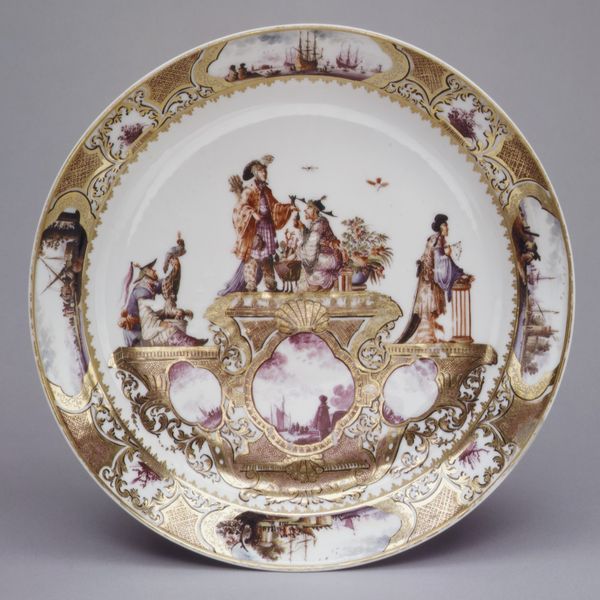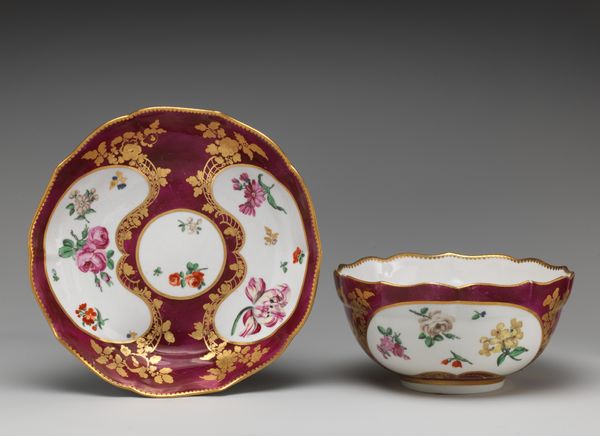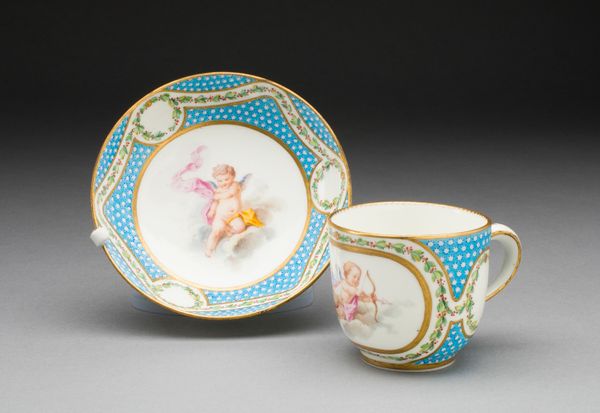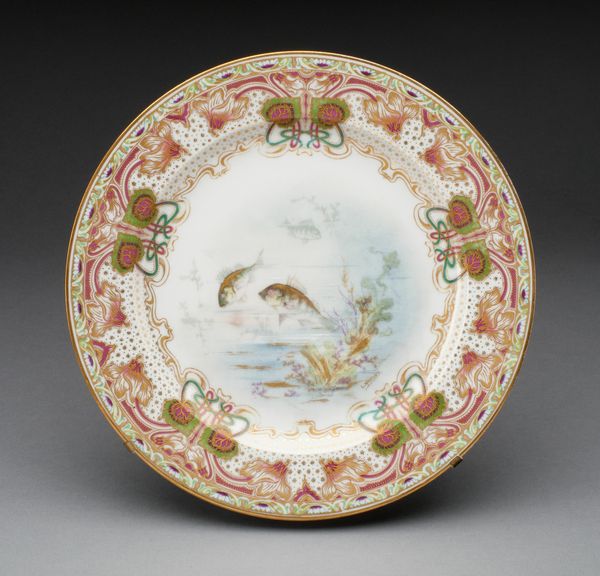
ceramic, porcelain, sculpture
#
landscape
#
ceramic
#
porcelain
#
figuration
#
sculpture
#
ceramic
#
decorative-art
#
rococo
Dimensions: Ecuelle (confirmed): H. 5 1/8 x W. 6 1/8 x D. 5 5/8 in. (13 x 15.6 x 14.3 cm) Stand (confirmed): Diam. 8 5/8 in. (21.9 cm)
Copyright: Public Domain
Curator: Standing before us, we have an exquisite example of eighteenth-century porcelain: a covered bowl and stand crafted by the Le Nove Porcelain Manufactory between 1760 and 1770. The Met is lucky to have this beautiful piece in its collection. Editor: Wow, it's... incredibly elaborate, isn’t it? I’m almost intimidated to imagine using it for, well, anything! The colours, the gilded edges, the swirling designs... It feels like it belongs in a princess's dollhouse! Curator: The Rococo style certainly lends itself to that feeling of opulent impracticality. We must consider the historical context. Porcelain like this wasn't just tableware; it was a display of wealth and refinement, reinforcing social hierarchies. Le Nove became known for its high quality porcelains. Editor: Absolutely. Looking at it now, it feels almost like a carefully constructed fantasy. Those miniature landscapes painted in sepia and mauve are captivating! Are those classical ruins in the backgrounds? They remind me of theatrical sets for some grand operatic drama. Curator: Yes, those are indeed inspired by classical motifs. Landscapes and figuration were particularly in vogue. Think about the wealthy merchant classes and the cultural impact of the Grand Tour at the time. Pieces like these brought a sense of the wider world into the homes of the elite. The very act of manufacturing, displaying, and possessing items such as this bowl was a performance in itself. Editor: I can just picture it. Although, I do wonder about the artists. To paint so finely, in such small detail...it requires a level of patience that frankly escapes me! It’s amazing to consider the labor and skill concentrated into a single object. Does it ever make you wonder what their daily lives were like, how they viewed the aristocracy that drove this kind of production? Curator: Precisely the right question. The creation of art relies not merely on the artist's ingenuity but also on social power, cultural values, and the very conditions of possibility available. We're reminded that artifacts of immense beauty and skill often reflect, reinforce, and also challenge established social norms. Editor: This covered bowl and stand…more than just something pretty to look at! It really does open up an entire world of considerations, doesn’t it? Curator: It does. And the Met has put great effort into interpreting such a dense object in a contemporary manner. Editor: Exactly, it leaves you with an appetite for deeper conversations around material culture and history.
Comments
No comments
Be the first to comment and join the conversation on the ultimate creative platform.
